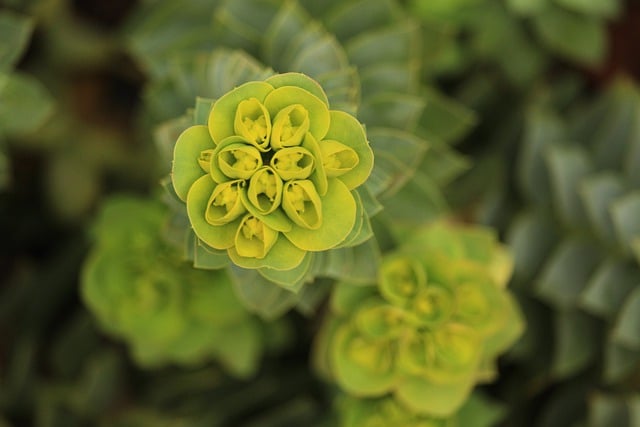How to Grow Milkweed From Seed
Milkweed is not only a beautiful addition to your garden but also a vital plant for monarch butterflies, as it’s the only type of plant their larvae can eat. With the decline in monarch populations, planting milkweed can contribute to their conservation. Growing milkweed from seed is a rewarding way to help the environment while beautifying your space. This post will provide a comprehensive guide on how to grow these essential flowers from seed.
Understanding Milkweed
Before we delve into the seeds, it’s important to choose the right type of milkweed for your region. There are over 100 species of milkweed (Asclepias spp.), however, the most common ones include common milkweed (Asclepias syriaca), swamp milkweed (Asclepias incarnata), and butterfly milkweed (Asclepias tuberosa). Do some research or ask at a local garden center about the best milkweed varieties for your area and growing conditions.
The Benefits of Milkweed:
Monarch Haven: Milkweed is critical for the survival of monarch butterflies, as it supports their lifecycle.
Pollinator Attractor: Besides monarchs, several other butterflies, bees, and pollinators benefit from milkweed.
The Importance of Milkweed
- Milkweed is vital for the lifecycle of the monarch butterfly.
- It serves as the host plant for their caterpillars.
- Milkweed contains cardiac glycosides which caterpillars ingest, making them unpalatable to predators.
- Growing milkweed helps to support biodiversity and maintain the balance of our ecosystems.
Choosing the Right Seed
Selecting a Species
- Choose a milkweed species that is native to your area to ensure that it will thrive.
- Consider the growing conditions of your garden, such as soil type, sunlight, and moisture.
Where to Obtain Seeds
- Buy seeds from reputable nurseries or online stores that specialize in native plants.
- Participate in seed exchange communities.
- Collect seeds from wild plants, only if it’s done responsibly and legally.
Soil Health: Milkweed roots aerate the soil and help it retain moisture. Seed Collection and Preparation
When to Collect Seeds: Collect seed pods in late summer/fall when pods are brown and starting to open. Preparing Your Seeds:
Milkweed seeds have a natural dormancy period which requires breaking before planting.
Stratification: Mimic natural winter conditions by moist stratifying your seeds. Wrap seeds in a damp paper towel, place them in a ziplock bag, and refrigerate for 1 to 3 months.
Remove the Fluff: Each seed is attached to silky fibers called coma. These should be removed before planting.
Starting Your Seeds
Understanding Stratification
- Many milkweed species require a period of cold stratification to germinate successfully.
- This simulates the natural process of seeds lying through winter and prompts them to awaken in the spring.
Stratifying Your Seeds
- Mix seeds with slightly damp sand and place them in a plastic bag.
- Seal the bag and store it in a refrigerator for 30 days to simulate winter conditions.
Planting
- After stratification, sow the seeds in a well-drained potting mix.
- Plant the seeds about 1/4 inch deep and water gently.
- Place the pots in a bright area but out of direct sunlight until germination, which usually occurs within 2-3 weeks.
Germination and Seedling Care
Optimal Conditions for Germination
- Milkweed seeds need warmth and moisture to germinate.
- Keep the soil evenly moist but not soggy.
- A consistent temperature of about 70°F (20°C) is ideal.
Seedling Maintenance
- Once seedlings emerge, they need plenty of light. A south or west-facing window might suffice or consider supplemental lights.
- Be vigilant about overwatering. Allow the surface of the soil to dry out slightly between waterings.
- Begin fertilizing with a diluted solution once there are a few sets of true leaves.
Transplanting
When to Transplant
- Plan to move the seedlings outside after the danger of frost has passed and they have several sets of leaves.
Hardening Off
- Gradually introduce the plants to outdoor conditions over a week or so. This process is known as hardening off.
- Initially, place them outside in a shaded, sheltered area for a few hours each day, slowly increasing their time outdoors.
Selecting a Site
- Choose a spot in the garden with well-draining soil and full to partial sun.
- Ensure there is enough space between plants to allow for growth—typically about 2 feet apart for most species.
Ongoing Care and Maintenance
Watering
- Once established, milkweed is fairly drought tolerant.
- Water the plants during extended dry periods or if you notice any wilting.
Weeding
- Keep the area around your milkweed plants free of weeds, especially while the plants are young and establishing themselves.
- Use mulch to help suppress weeds and retain soil moisture.
Pest Monitoring
- Check your plants for signs of pests or disease regularly.
- Monarch caterpillars will eat the leave, but this is encouraged! It means your garden is successfully supporting the species.
Pruning
- To keep plants healthy and encourage more blooms, you may trim back milkweed after it flowers.
- Deadheading, or removing spent flowers, will promote new growth and possibly a second bloom in the same year.
Planting Your Seeds
Starting Indoors:
- Seed Tray: Fill a seed tray with seed-starting mix and water well.
- Plant Seeds: Press seeds gently into the soil and cover with a thin layer of additional soil.
- Light and Temperature: Milkweed prefers warmth and light to germinate, so place your tray by a sunny window or use a grow light, and keep the room at around 70 to 75 degrees Fahrenheit.
Direct Sowing:
- Sowing Time: Sow in fall to allow winter to naturally stratify the seeds, or after artificial stratification.
- Soil Prep: Clear the area of grass/weeds, and work the soil a little to loosen it.
Planting: Spread seeds on the soil surface and press them into the ground. Water gently if the soil isn’t moist, and leave nature to do the rest. Transplanting Seedlings:
When seedlings have a few sets of true leaves and are several inches tall, you may transplant them.
- Choose the right spot in your garden with full to partial sunlight.
- Carefully uproot seedlings using a fork or small trowel.
- Set in prepared holes twice the width of the root ball, backfill with soil, and water thoroughly.
Milkweed Care
Milkweed is famously low-maintenance but still benefits from some basic care.
Watering:
A newly planted milkweed needs regular watering to establish; once established, they are drought resistant.
Soil and Fertilization:
Milkweed doesn’t need rich soil or fertilization, making it even easier to care for.
Managing Spread:
Some milkweed species can be quite invasive. Manage self-seeding by deadheading flowers before they produce seed pods if you don’t want numerous volunteer plants.
Pest and Disease Management:
While generally pest-resistant, occasionally milkweed may have issues with aphids or milkweed bugs. Treat infestations with mild soap solutions and water sprays if necessary.
Frequently Asked Questions
What’s the best time to plant milkweed seeds outdoors?
The best time to plant milkweed seeds outside is in the fall, so they experience natural cold stratification over the winter. However, if planted in the spring, make sure to stratify the seeds artificially by refrigerating them.
Can I just scatter milkweed seeds?
Yes. To mimic the natural process, seeds can be scattered directly over the ground. However, they will have a greater chance of survival from seedling stage if started indoors under controlled conditions.
How long does it take for milkweed to grow from seed?
Milkweed seeds typically germinate within 10 days to 2 weeks under the right temperatures but expect growth to full maturity to take a full growing season.
How closely should I plant milkweed seeds?
Plant milkweed seeds approximately 18 inches apart to allow enough room for growth and to ensure adequate air circulation between adult plants.
Conclusion
Growing milkweed from seed is simple, requires little maintenance, and rewards you greatly by supporting ecosystems, especially monarch butterflies. Remember to prepare and plant the seeds properly, then enjoy the benefits of these robust and helpful plants. Start this project, do it right, and you’ll play a part in beautifying your garden along with contributing to environmental preservation efforts. Happy gardening!

